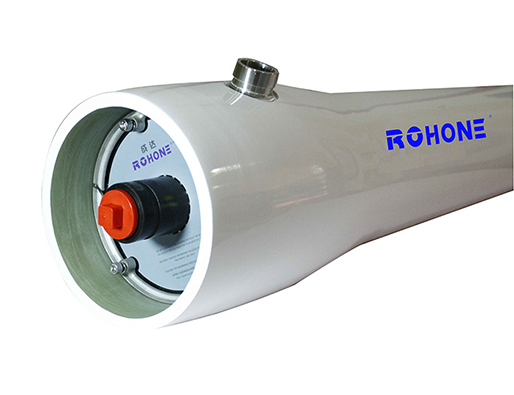Everyone knows that the most important and the core of water purification equipment is the filter element. The filter element is usually composed of various membranes and membrane shells. The membrane shell is the carrier membrane in water purification products such as water purifiers or water purifiers. The quality of the container and the membrane shell directly affects the normal performance of the internal membrane function, and the user needs more maintenance during installation and use. Membrane shells also have strategic significance for water purification products.
So, what types of reverse osmosis membrane pressure vessels are commonly used in the market? What is the role of each?
At present, the mainstream membrane shell is made of food-grade PP material, glass steel, stainless steel, and other materials through high temperature or dissolution production. Its main function is to carry containers of various equivalent types of ultrafiltration membranes and reverse osmosis membranes to ensure that the membranes are more effective in filtering water and to avoid water leakage or water quality degradation.
According to the material classification, there are three types of membrane shells on the market: PP plastic, transparent glass tube, and stainless steel.
The PP plastic membrane shell has good elasticity and light texture. After the membrane is matched, it will automatically adjust to the water pressure. It is the most popular membrane shell on the market at this stage. However, its performance in terms of wear resistance, pressure resistance, and aging resistance is slightly worse. If the water pressure is too large, it may cause damage to the outer wall and cause water leakage.
The pressure resistance of the transparent glass tube membrane shell is above the plastic, and the transparent outer wall can directly see the use of the membrane. However, glass is a fragile product with a low usage rate and is mostly used in some special industries.

Reverse Osmosis Membrane Pressure Vessels
The stainless steel membrane housing is the best in quality and pressure resistance, and it also has advantages in anti-aging. However, the demand for materials is stricter, and the price is slightly more expensive, which is mostly used in commercial and industrial water purification products.
According to the distinction of the device membrane, membrane shell can be divided into nanofiltration membrane shell, ultrafiltration membrane shell, RO membrane shell, corresponding to nanofiltration membrane, ultrafiltration membrane, and RO membrane (reverse osmosis membrane). But now nanofiltration membranes are relatively rare in the market, or it can be said that they are gradually withdrawing from the market. Therefore, nanofiltration membranes are not discussed.
What are the differences between an ultrafiltration membrane shell and a reverse osmosis membrane shell?
According to the difference of membranes carried in different water purification products, there are two types of membrane shells commonly used in the market, namely, ultrafiltration membrane shells used in water purifiers and reverse osmosis membrane shells used in water purifiers. Although all kinds of membrane shells are made of food-grade plastic materials, there are still slight differences in other aspects.
The difference between ultrafiltration membrane housings and reverse osmosis membrane housings is mainly reflected in the selection of materials, compression resistance, and production details.
Since water purifiers based on ultrafiltration membranes require less inlet water flow rate (water pressure) than pure water purifiers, safety, and environmental protection are the main considerations when selecting materials, and the cost of raw materials is relatively low, so the price is more opposite. The permeable membrane shell has a lot of benefits. Water purifiers based on reverse osmosis membranes need to control the water pressure to achieve precise water purification capabilities, which imposes greater restrictions on the membrane shell. In addition to safety and environmental protection when selecting materials, the carrying capacity of the membrane shell against water pressure must also be considered, The price of finished products is higher.
If the pressure resistance effect is compared, the resistance of the ultrafiltration membrane shell to water pressure is about 10KG, which is mostly used in areas with low water inlet pressure; the reverse osmosis membrane shell can reach 15-25KG, or even higher, in some water pressure differences Large places can play a greater role.
From the perspective of production details, the solubility of the ultrafiltration membrane shell material is low, and it is more efficient at high-temperature shaping. The reverse osmosis membrane shell is much slower than the ultrafiltration membrane shell due to the material difference, and the production efficiency is relatively slow.
The common water purifier membrane shell leakage problems on the market are mostly caused by the long-term impact of unstable water pressure on the membrane shell. When choosing which membrane shell to use, it is recommended that users consider the actual water pressure and choose related products according to different water needs. If you want to use a water purifier when the water pressure is too high, you should install it in the middle of the water inlet pipe. The pressure reducing valve is of great help to the safe use of the water purifier and can extend the service life of the water purifier accessories.